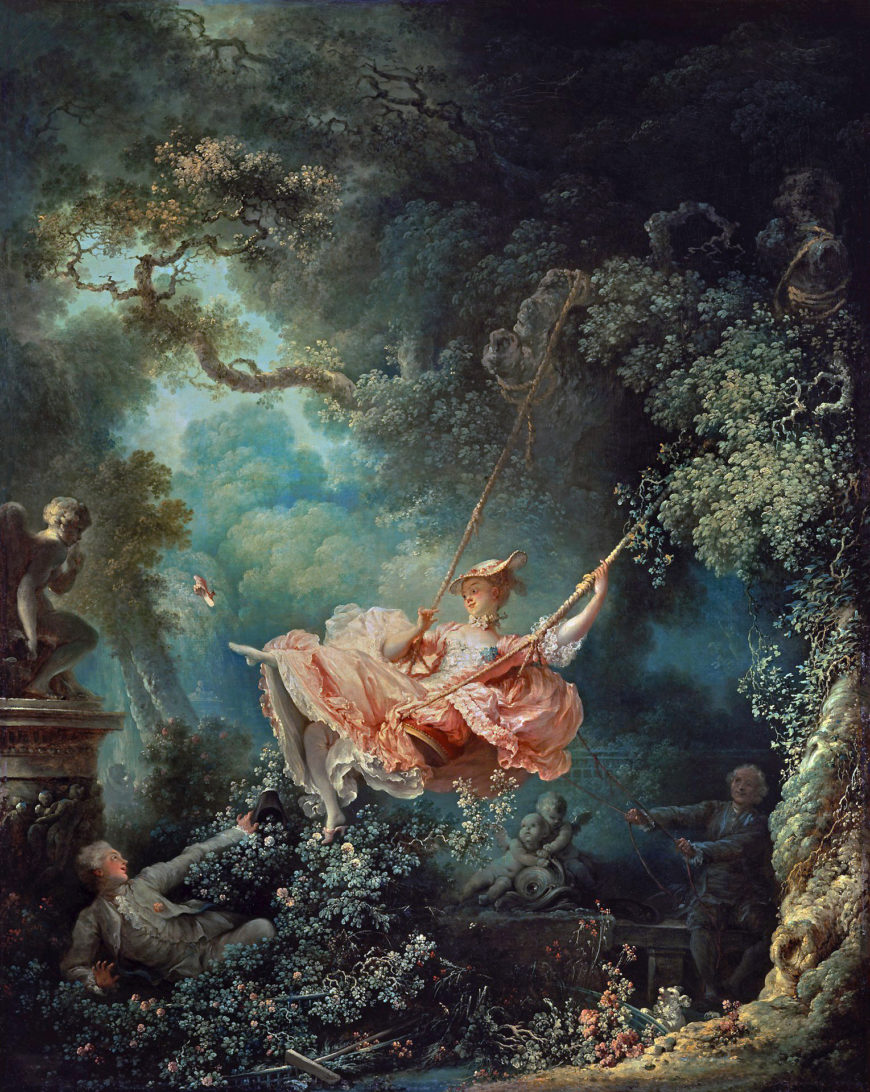Jean-Honoré Fragonard, The Swing
Fantasy, flirtation, and licentiousness–in short, the spirit of the Rococo–coalesce in the painting The Swing. An anecdote provides an interpretation of the painting. According to the story, another artist, Gabriel-Francois Doyen, was approached by the Baron de Saint-Julien to paint his mistress “on a swing which a bishop is setting in motion. You will place me in a position in which I can see the legs of the lovely child and even more if you wish to enliven the picture.” Doyen declined the commission but directed it to Fragonard.

The painting suggests a collusion in erotic fantasy between the artist and patron, with the clergy as their unwitting dupe. This painting offers the thrill of sexual opportunity and voyeurism in a stage-like outdoor setting. The innocence of the public arena heightens the teasing quality of the motion of the swing toward the patron-viewer. The painted sculpture of a cupid to the left, holding a finger to his lips, suggests the conspiracy to the erotic escapade at which we as viewers are now participants. Fragonard used painted sculpture in many of his works to echo or reinforce their themes. Set in a lush arbor, this scene encapsulates the “place of love” secluded by trees that provides secrecy for this erotic encounter. The dense and overgrown landscape, lit by radiant sunlight, suggests the warmth of spring or summer and their overtones of sexuality and fertility. The flowing pastel colors and feathery brushstrokes create an otherworldly haze that enhances the sensuality of this fantasy spun by Fragonard.
Fragonard represented the epitome of the sensuality of the Rococo, and his works are marked by an extraordinary virtuosity in his use of color. His paintings range from erotic fantasies to intimate studies and pastoral landscapes, subjects that provided distraction for his wealthy patrons.[1]
- Penelope J.E. Davies, et. al, Janson's History of Art: The Western Tradition, 7th ed. (Upper Saddle River, NJ: Pearson Education, 2007), 763, 765. ↵

